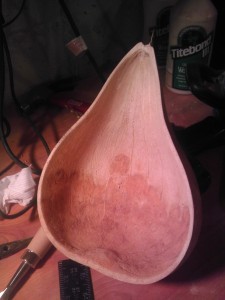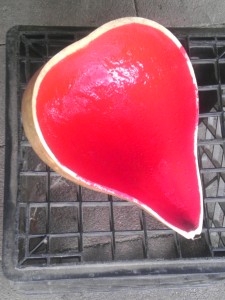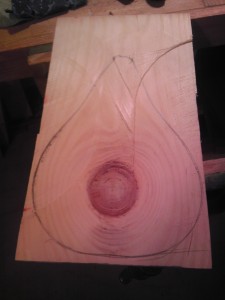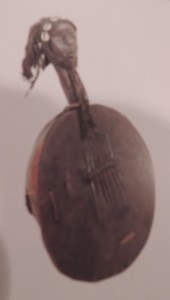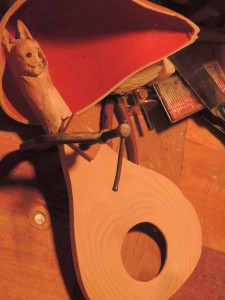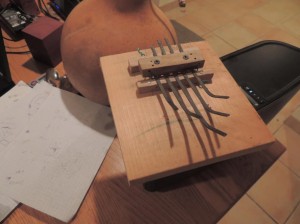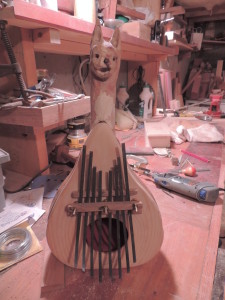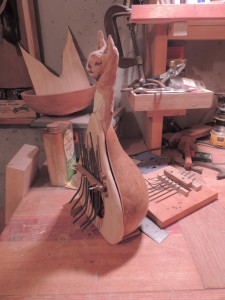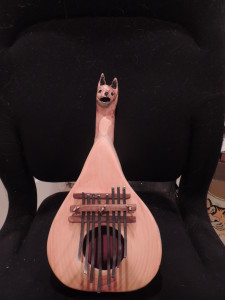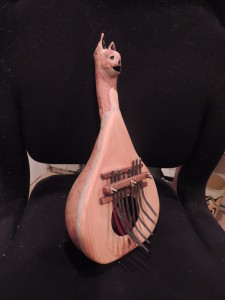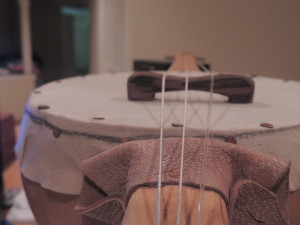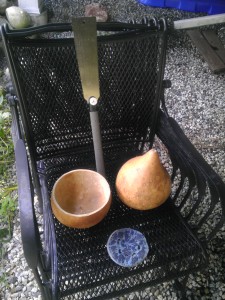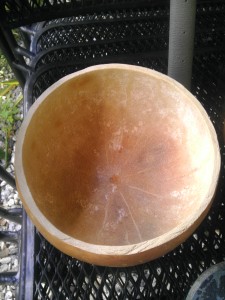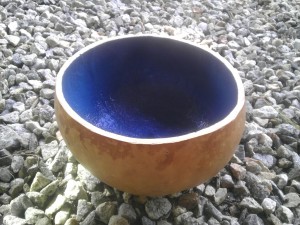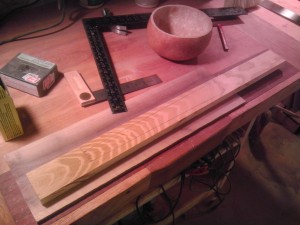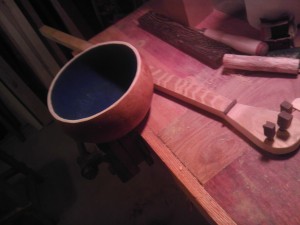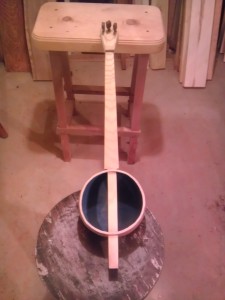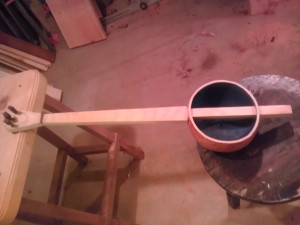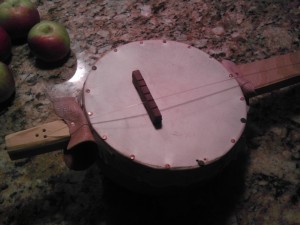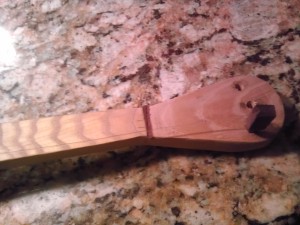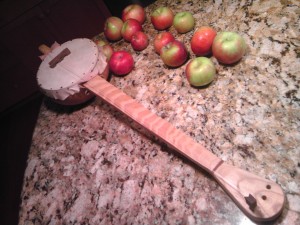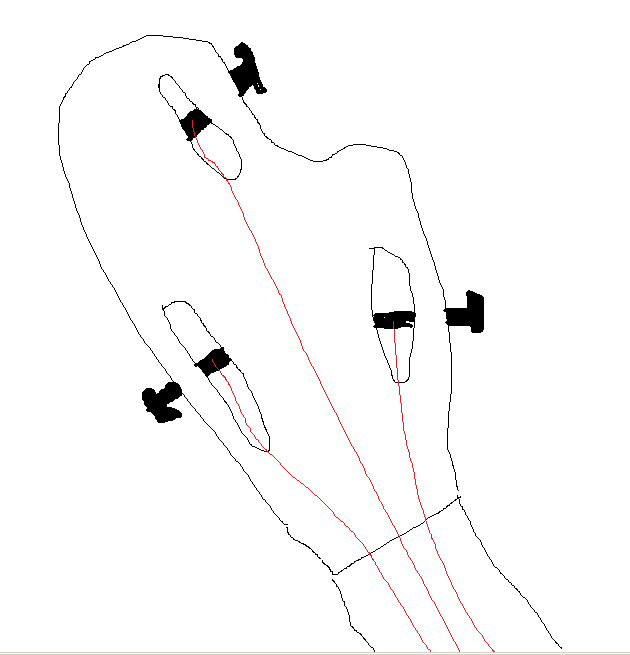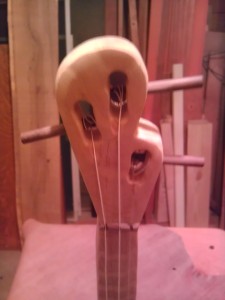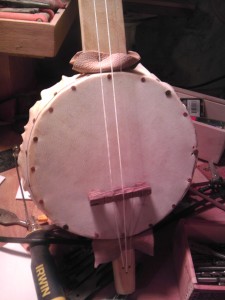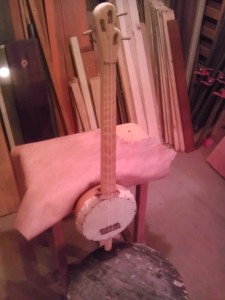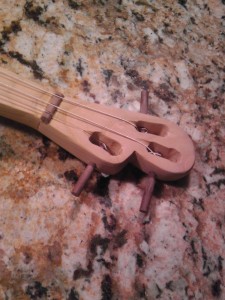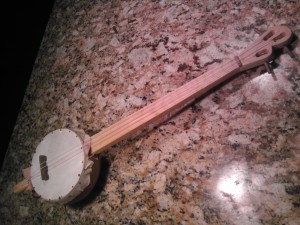I’m not exactly sure how this started but of all recent projects it has been in many ways the most satisfying. Previously on this channel a three string gourd banjo was made, and others stringed gourd instruments are contemplated, so this means there are various gourds sitting around taunting the muse. One of the taunts, if you will, was the long cut, top to bottom, instead of across, evoking lute and dulcimer or violin shapes depending on the gourd. I’m already down the path of commitment on the next stringed gourd though, so I did not want to have two such in the fire at once, so a detour to a gourd backed mbira seemed a good move, needing as I did a little space to reflect on the previous stringed gourd before chugging into the next.
Begin with the long cut
Gourds are legendary for their mold, so some sort of treatment of the inside is warranted. When I was a lad the virtues of Rustoleum were extolled to a point not far from the glory of God, so both because of these purported virtues and because for me Rustoleum evokes those ancestors, and one wants ancestors in one’s mbira, red Rustoleum it is. I know gourds don’t rust.
Kind of looks like a heart, eh? Now a facing board of some sort will be needed. I think this might even be called a sound board. For some reason it seemed virtuous to me that the place where the wood was removed for the sound hole not be arbitrary relative to the wood, but rather supported by the grain all around. A knot therefore seemed an ideal thing to remove to gain this support.
The wood ‘expects’ energy to flow through it there, or at least my imagination emphasizes that aspect. Now a small detour is required, conceptually, to get to the next steps. First, in reading a book recently on gourd instruments I had seen a picture of a gourd mbira that I liked. The spirit of it, if you will, from which it’s voice arises.
Now the second element of the detour is that earlier in the year at the end of winter an old lilac branch had blown down. I made a spoon of it, previously described here, but also I carved out a little spirit that seemed to be be in the wood, a whimsy, surely, such as these things are, and that spirit sat in the kitchen through the spring and summer watching us with its funny eyes till for some reason this autumn I took it to the workshop. Oh the secret workings. Worth noting is that both in the spoon and in this spirit neck/head are ant tunnels. The ants came out as the wood thawed as I worked it. It was their home.
A local spirit to meld with board and gourd. I believe this be appropriate as far as what I am told of these instruments. Also in the workroom had nestled a rake head long deprived of a pole. Metal tines have rakes, they do, but appropriate and sufficient for music? A test device therefore, and also to see what would and would not work mbira sound-wise
The sound seemed ok to me, at least in the realm of plausible, and the design with a few modifications would be very tunable. The sound follows
This is a far cry from the the Stella Chiswese that has been in my playlist for twenty years.
Therefore, a bit of cutting some tines, a few brass bolts. Wing nuts, because a they are easy to use without tools and a project like this just attracts them. The join though, of gourd to board – that looks challenging.
I ended up going with a solution that produced tremendous adhesion and strength but it was a little short on aesthetics. I used Goop to glue the gourd edge face to the board edge back, but that has a bit too flexible of an aspect, so then I used an epoxy putty to line all of the joined edges, as well as to do some cosmetic surgery for the lilac spirit. I’m very happy with the result but I count the use of these compounds as a fail. I’ve already come up with a plan for a very strong but much more authentically primitive approach to this join for the next one.
Of note, I used the putty to cap the ant tunnel at the top of the head of the spirit. The tunnel runs the length of the wood. I drilled out the mouth so that it connects to this tunnel, so that, if only euphemistically, the music may be sung by the spirit.
As I tune and play I will provide further reports.

